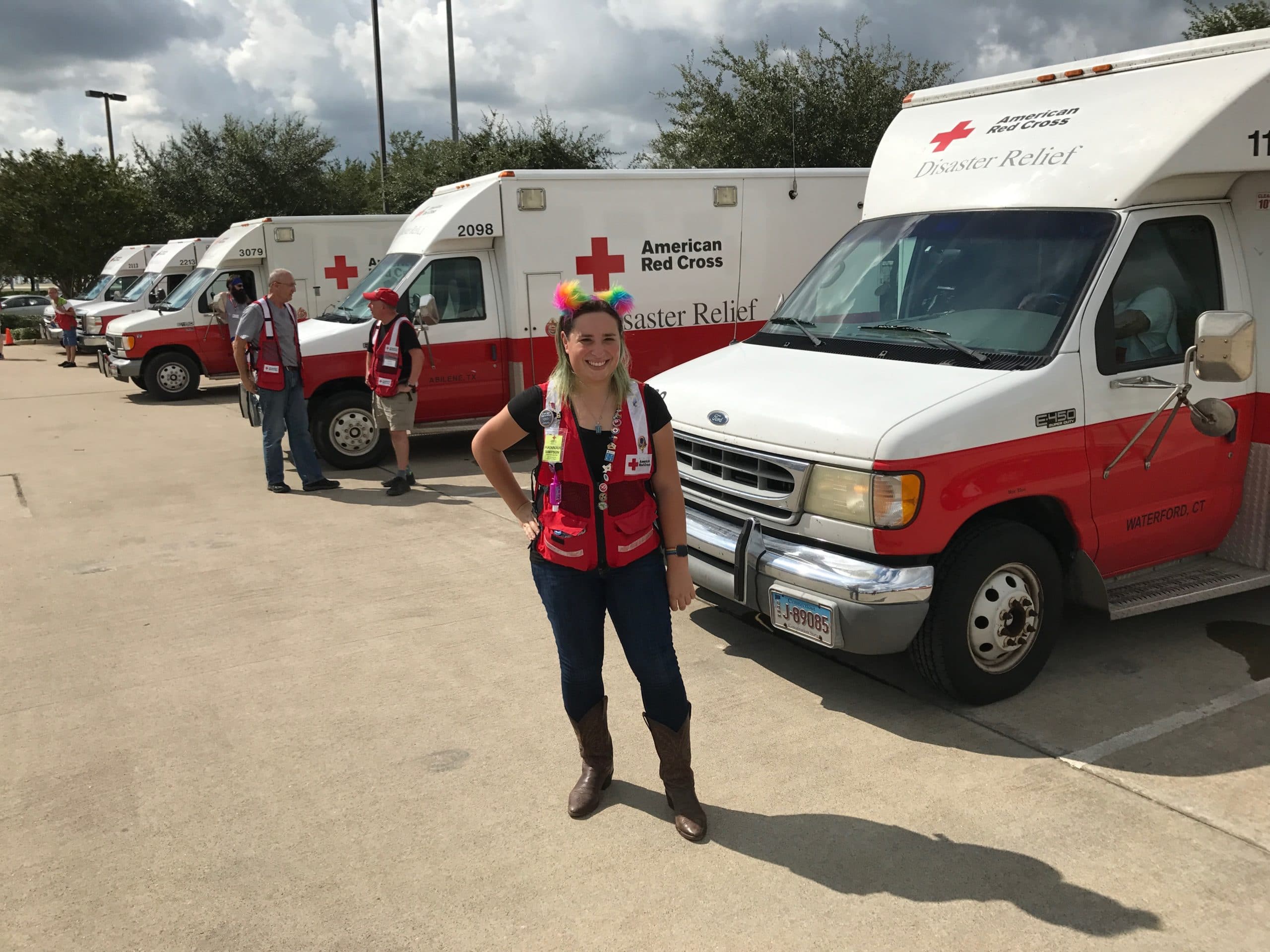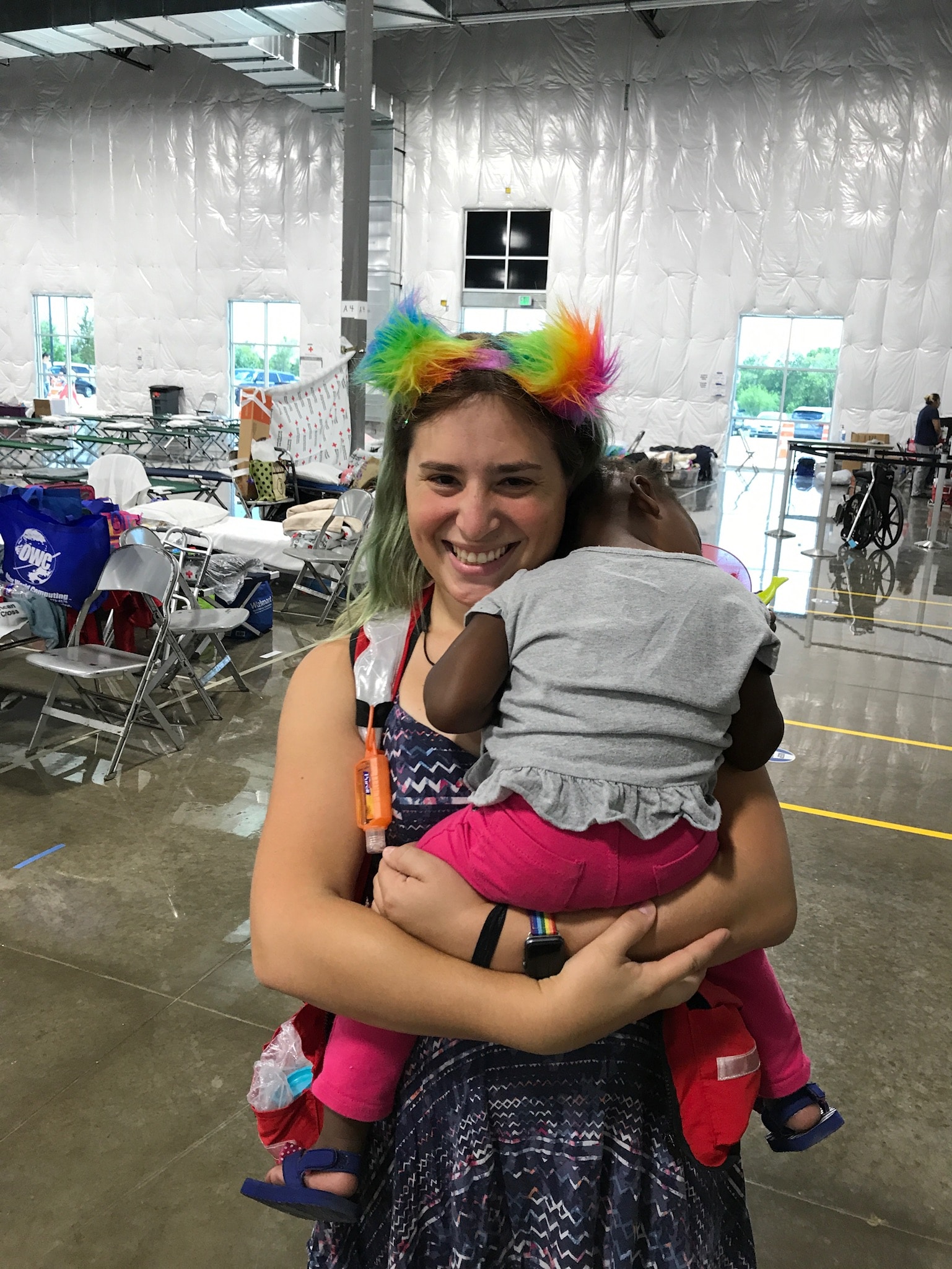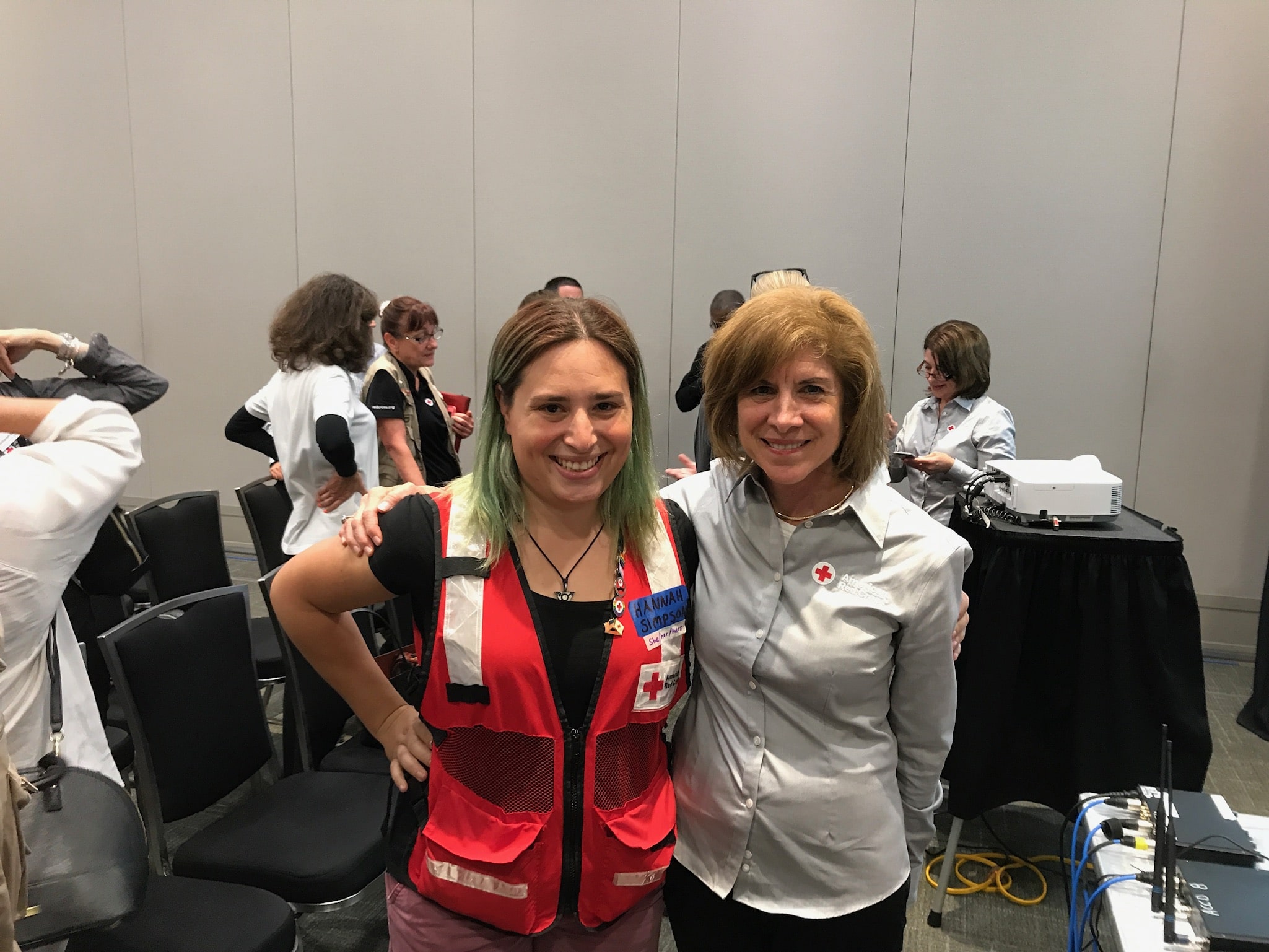This Pride Month, we’re celebrating our employees and volunteers who are part of the LGBTQ+ community. Each and every day they work to carry out our humanitarian mission in communities across the country. Meet Hannah Simpson, a Disaster Cycle Services volunteer in our Greater New York Region. She is also a member of our American Red Cross Pride Team Resource Group. Here is a conversation we had with her around Pride Month and the importance of diversity and representation.
Why is Pride Month important to you?
I like to explain to those unfamiliar with Pride that while it ends each year on June 30th, it begins again on July 1st. In my own life, Pride, specifically the days when there is a march or a parade, became a proving ground for presenting myself in public as Hannah long before I fully came out or transitioned. Like Halloween, it felt like permission for me to conquer my fear of interacting with the world as a female, even if only for a day at a time. Most importantly, it drew me closer to others on the same journey.
Six years since revealing myself as Hannah once and for all, Pride might feel easy and effortless to me not only in New York, but traveling to Austin, Montreal, Amsterdam, or Jerusalem. It can only be a party though if it remains a promise too. We must remember those we have lost who paved the way for us to even contemplate our identities, let alone flourish within them. We must remember the murdered, particularly the men and women of color, whose chances to realize themselves were cut short. The path moving forward must be wider and more welcoming for those next to come out than we ourselves found.
What is your role at the Red Cross?
I am a Disaster Cycle Services volunteer in the Greater New York Region helping locally with the Workforce Engagement team. Whenever a disaster hits, this team is slightly behind the scenes making lots of phone calls to see which volunteers are available, track who has been activated, and make sure everyone’s contributions are logged.
I have deployed four times to efforts in Texas during Hurricane Harvey, to Florida for Hurricane Michael and for preparations for Hurricane Dorian, and to the Camp Fires in Northern California, where I work directly with clients in our shelters and as a member of our Disability Integration (DI) team. When we establish ourselves in an impacted community, our mandate is to be there for everyone to the best of our ability. The DI team focuses in on those who need specialized assistance or equipment to help them progress in their own recovery. This may mean replacing a walker that someone evacuated without, setting up a video-phone laptop for signing clients, or maintaining a few less sensory-intensive spaces within a shelter for neurodiverse individuals of any age.
I have also had to the privilege to give lunchtime talks about gender identity and how it relates to disaster from this volunteer’s perspective at my local chapter and others nearby.
What drew you to the Red Cross?
This is a favorite story. I was on a business trip, hired to be the keynote speaker and sermon-giver for Austin, Texas’s Interfaith Pride Coalition’s 2017 annual Pride service. This was held on Tuesday night of Pride week and went great, but I booked my flight home for Sunday to stay for Saturday’s planned parade. A storm now called Hurricane Harvey was suddenly forecast to make landfall and stay overhead all weekend. Pride was sensibly cancelled for safety and the entire airport was shuttered too.
Unable to leave, I started reading the local news about the storm prep and saw an ad that the Red Cross was recruiting local volunteers. My host in Texas dropped me off at the Central and South Texas Chapter office, where I was at first told the intake training was full and asked to come back that evening. I walked around the back to the staff entrance instead, and just said, “I’m hanging around for the next meeting, how can I help while I wait?” Once I got signed up formally and was cleared, I was immediately dispatched on a team to help set up an evacuation shelter at a local school gym for everyone bussed away from the coast. As the storm came in, I began client intakes, read stories to kids with donated books, and helped in the shelter for the next 30 straight hours through the entire storm. Even though I took breaks, I don’t think I slept at all.
I loved what I was doing in Austin so much that I stayed on there and then transferred to Houston as a general volunteer for a total of three and a half weeks.
What is one of your favorite Red Cross moments?
I was volunteering at a shelter for the Camp Fires not far outside of the city of Paradise, which had burned to the ground, displacing countless people from their familiar surroundings and resources that help them live independently. I had been referred to a new woman who arrived at the shelter and at first appeared disoriented and in perhaps mental or medical distress. I had the chance to sit down and start talking with her and realized that she was cognitively much younger than she appeared physically. She needed special attention more than emergency services, which is the goal for the DI team to help facilitate. I regularly carry clown balloons and a small pump with me for entertaining kids while their parents speak with caseworkers or agencies, so I took them out for her. We made balloon swords and circled the shelter in marching steps pretending to be its guardian knights. I made her a Red Cross blanket cape too. It was make-believe, but she immediately felt more relaxed, more seen, and safer.
What does it mean for you to be a part of the LGBTQ+ community and work at the Red Cross?
There is no wrong way to volunteer for your community, but I particularly love being a proud trans woman in an organization works hard to serve our nation and to embrace diversity. Some people want to believe that LGBTQ+ issues only impact the fringes of society and can be disregarded when emergencies arise, but in reality, the opposite is true. Who we are doesn’t burn down with a house in wildfires or dissolve away with material possessions in floodwaters.
For anyone who survives a disaster, your sense of self could suddenly be all you have left. Yet transgender and nonbinary people, as well as those in other marginalized identities, might feel like recovery services are less available or that they will risk mistreatment by other clients, or even staff. I strive to be one face among the many changing that perception. There is work to be done to improve for sure.
I also love that we can and do proactively devote resources to empower volunteers, who might be blind, deaf, work with service animals, or utilize mobility assistance, to contribute meaningfully.
What’s one piece of advice you’d give your 20-year-old self?
My grandfather recently passed away at 97. He only met me being my authentic self at age 92. He took it in stride, and stands as an example for anyone’s conservative grandpa. At his funeral, something hit me: I spent so much more of my life with him wondering how to say what I had to than we had together once it had been said. We only get so much time for ourselves and with those we care about it, don’t waste it being something or someone you aren’t. I am visible and open because not hiding my past might help others to stop hiding their futures.
What would you tell someone who is interested in working or volunteering with the Red Cross?
Call your local chapter. Then show up. Be persistent. The organization may feel large, but it’s really just because there is so much going on from home fire prevention to blood collection to local and national response efforts. It can admittedly take a little while to figure out where your schedule and interests will fit best.



